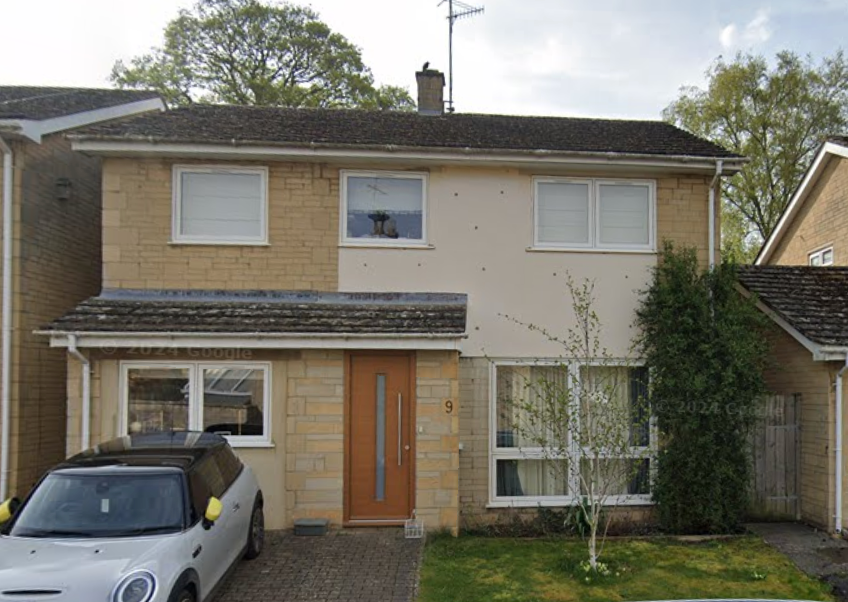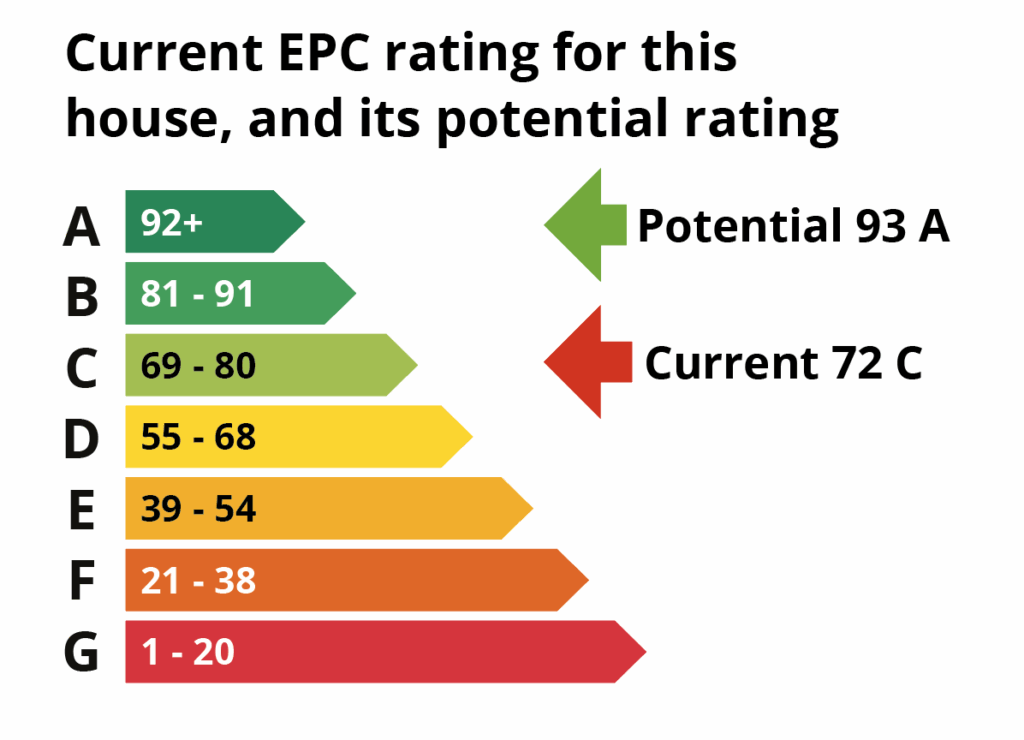
1970s detached home
Could your home be made warmer, cheaper to run, and better for the planet? See what’s possible when you take a whole-home approach to planning energy upgrades.
What’s the potential of a home like this?
This 1970s detached house in Charlbury is typical of thousands across Oxfordshire – cavity walls, solid floors, and a conservatory that loses heat in winter and traps it in summer.

The owners wanted to make it fit for the future – not by doing everything at once, but by understanding what would make the biggest difference over time.
With support from Cosy Homes Oxfordshire, they commissioned a Whole House Plan: an expert assessment of the best steps to cut carbon, lower energy bills, and improve year-round comfort.
Here’s what the plan revealed:
| Carbon emissions could be cut by over 90% |
| The EPC rating could rise from 72 C to 93 A |
| Annual fuel bills could fall by more than half |
And because the plan is staged, it can all be done gradually – one upgrade at a time, at a pace that suits the household.

“We approached Cosy Homes Oxfordshire with the aim of making our family home fit for the 21st century. They gave us a holistic and realistic vision of what’s possible over time, allowing us to plan our finances and life to complete the retrofit in stages.”
Frances, Charlbury
Where this home stands now
House profile
| EPC rating | Current 72 C > Potential 93 A |
| Type | Detached |
| Built | 1970s |
| Location | Charlbury |
| Occupancy | Owner-occupied |
| Bedrooms | 4 |
| Floor area | 109m² |
| Walls | Cavity, previously filled |
| Floors | Solid |
| Roof | Low-pitched, loft |
| Windows | Double glazed, uPVC |
| Annual energy use | 16,380 kWh (146 kWh/m²) |
| Carbon emissions | 3.4 tonnes CO2/year |
The EPC rating: now vs potential

An EPC rates your home’s energy efficiency – from A (best) to G (worst). A higher score can mean lower bills, but it doesn’t guarantee comfort. Whole-home upgrades help bridge that gap.
Long-term comfort, short-term disruption
| Key to tables: | Low impact: • | High impact: •••••• |
| Minor measures | Comfort & health | Disruption |
|---|---|---|
| Separate conservatory from house with external-grade door | ●●●● | ●● |
| Increase loft insulation to 300mm | ●●●● | ●● |
| Insulate and draught-proof loft hatch | ●●●● | ● |
| Insulate porch roof | ●●●● | ●●● |
| New insulated doors | ●●●●● | ●● |
| Ventilation improvements | ●●●●●● | ●● |
| Measure | Comfort & health | Disruption |
|---|---|---|
| External wall insulation to filled cavity walls | ●●●●● | ●●● |
| New double or triple glazed uPVC windows | ●●●●●● | ●●●● |
| Air source heat pump | ●●●●●● | ●●●● |
| Measure | Comfort & health | Disruption |
|---|---|---|
| Solar PV | ● | ●● |
Expert tip

“The cavity wall insulation had deteriorated over time. It’s possible to extract and refill it with modern materials that perform much better.”
Geordie Stewart, Scheme Manager
The difference each step could make
These figures show how each recommended measure could affect the home’s EPC rating, energy bills, and carbon emissions – if installed in the order shown. They’re based on a full Whole House Plan tailored to this property.
| Measure | Est. cost | EPC | Fuel bill | CO₂/year |
|---|---|---|---|---|
| Where you are now | – | 72 C | £1,189 | 3.38 t |
| External-grade conservatory door | £2.1k–£2.7k | 73 C | £1,134 | 3.18 t |
| Increase loft insulation | £1.5k–£2.1k | 73 C | £1,105 | 3.08 t |
| Insulate front extension roof | £2.7k–£3.3k | 73 C | £1,103 | 3.07 t |
| External wall insulation | £35k–£42k | 76 C | £983 | 2.63 t |
| Triple glazed windows | £11.5k–£18k | 78 C | £894 | 2.30 t |
| New front door | £2.1k–£2.7k | 78 C | £875 | 2.23 t |
| Whole-house ventilation | £1.8k–£2.2k | 78 C | £875 | 2.23 t |
| Air source heat pump | £7.5k–£12.5k | 81 B | £938 | 0.53 t |
| Solar PV | £4.5k–£6k | 93 A | £421 | 0.17 t |
Boost your EPC rating
Installing a single major system like a heat pump or solar panels can still make a big difference. These examples show how individual upgrades could shift the home’s EPC and reduce carbon emissions – even before doing everything else.
| Upgrade option | EPC rating | Fuel bill | CO₂ emissions |
|---|---|---|---|
| Just solar PV | 84 B | £690 | 3.02 t CO₂ |
| Just heat pump † | 76 C | £1,213 | 0.68 t CO₂ |
| Solar + heat pump | 88 B | £694 | 0.32 t CO₂ |
Expert tip

“To improve efficiency, separate off the conservatory from the rest of the house with an external-grade door – or replace the glazed roof with insulated panels.”
Natasha Ginks, Retrofit Coordinator
Wondering what’s right for your home?
A Whole House Plan gives you expert, independent advice on the best steps to take – and in what order – so every upgrade really works.
Don’t put it off another year. Take the first step with a free consultation. Our team of experienced Retrofit Advisers will listen to your goals, help you understand what’s possible, and outline the best next steps – no pressure, no obligation.
Smarter home upgrades. Backed by trusted retrofit expertise.
A House Like Mine
This case study is part of A House Like Mine – a collection of real Oxfordshire homes used to model the potential of energy-saving upgrades.
Each one is based on a Whole House Plan: expert guidance on what could be done, what it might cost, and what difference it could make.
These homes haven’t had the work done – but they show what’s possible when you plan it properly.
Prefer a PDF version?
Download a shareable PDF of this case study – perfect for your community group, local class, or anyone curious about improving home energy efficiency.
We’re making this resource freely available to raise awareness of how retrofitting – upgrading your home to use less energy and stay comfortable year-round – can make a real difference.
Click here to download the PDF
